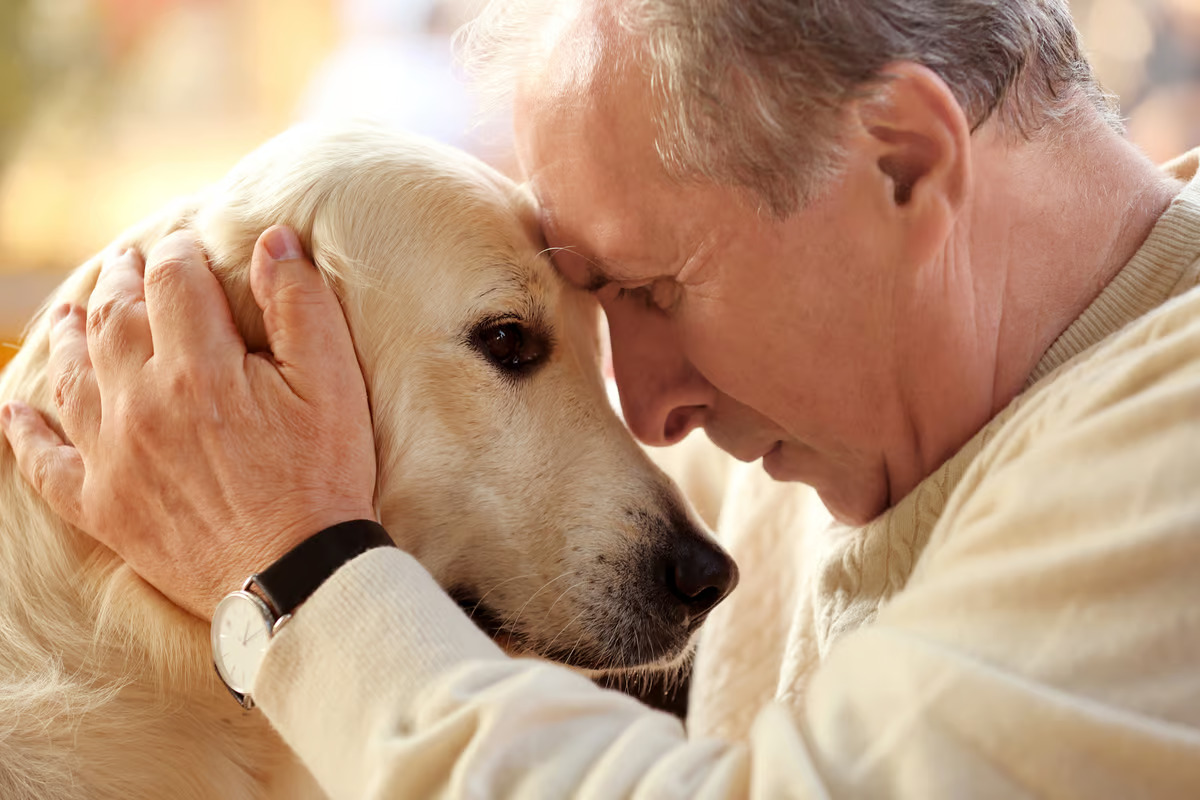 Dogs can already be helpful to those suffering from PTSD, and new research shows they might even be able to predict flashback events and intervene before they happen. Depositphotos –
Dogs can already be helpful to those suffering from PTSD, and new research shows they might even be able to predict flashback events and intervene before they happen. Depositphotos –
Dogs work pretty hard to keep their title as our best friends. In addition to sniffing out disease, detecting bombs, and helping humans overcome mobility challenges, our four-legged companions also play a role in helping calm people suffering from PTSD (post-traumatic stress disorder). In those cases, dogs respond to physical clues given off by a human indicating a flashback event, plus they provide comfort by either snuggling or nudging a person to remind them that they are currently in a safe environment.
Researchers at Dalhousie University in Nova Scotia wanted to see if dogs could help PTSD sufferers before flashbacks occurred, much in the same way they can intervene before someone is about to have a seizure, or sniff out stress induced in other ways.
The scientists turned to a group that was part of a study aimed at seeing how people who had experienced past trauma reacted to current reminders of that trauma. Fifty-four percent of the individuals in that group met the clinical guidelines to be diagnosed with PTSD. From that 54%, the researchers enlisted 26 scent donors. Each participant was asked to wear a face mask while breathing calmly and then again when being reminded of their trauma.
Callie and Ivy
With the sample-gathering underway, the researchers set about recruiting dogs for the study. From a field of 25 canines, they found two that were motivated enough to participate in the training to identify stressed breath. They are named Ivy and Callie.
“Both Ivy and Callie found this work inherently motivating,” said study first author Laura Kiiroja. “Their limitless appetite for delicious treats was also an asset. In fact, it was much harder to convince them to take a break than to commence work. Callie in particular made sure there was no dilly-dallying.”
The dogs were trained to sniff out the differences between calm and stressed facemask samples, and then they were tested on each of the 52 face mask samples collected (26 calm, 26 stressed). Callie could distinguish between the two 81% of the time, while Ivy got an accuracy score of 74%. Interestingly, the researchers believe that Callie’s knack in the test was related to sniffing out the breath chemicals related to shame, while Ivy’s expertise correlated to anxiety.
“Although both dogs performed at very high accuracy, they seemed to have a slightly different idea of what they considered a ‘stressed’ breath sample,” said Kiiroja. “We speculated that Ivy was attuned to sympathetic-adreno-medullar axis hormones (like adrenaline) and Callie was oriented to the hypothalamo-pituitary-adrenal axis hormones (like cortisol). This is important knowledge for training service dogs, as alerting to early-onset PTSD symptoms requires sensitivity to sympathetic-adreno-medullar axis hormones.”
The team acknowledges that their research, which has been published in the journal, Frontiers in Allergy, was a proof-of-concept study and that larger studies need to be conducted to verify this newly found ability in dogs.
Source: Frontiers
–
























